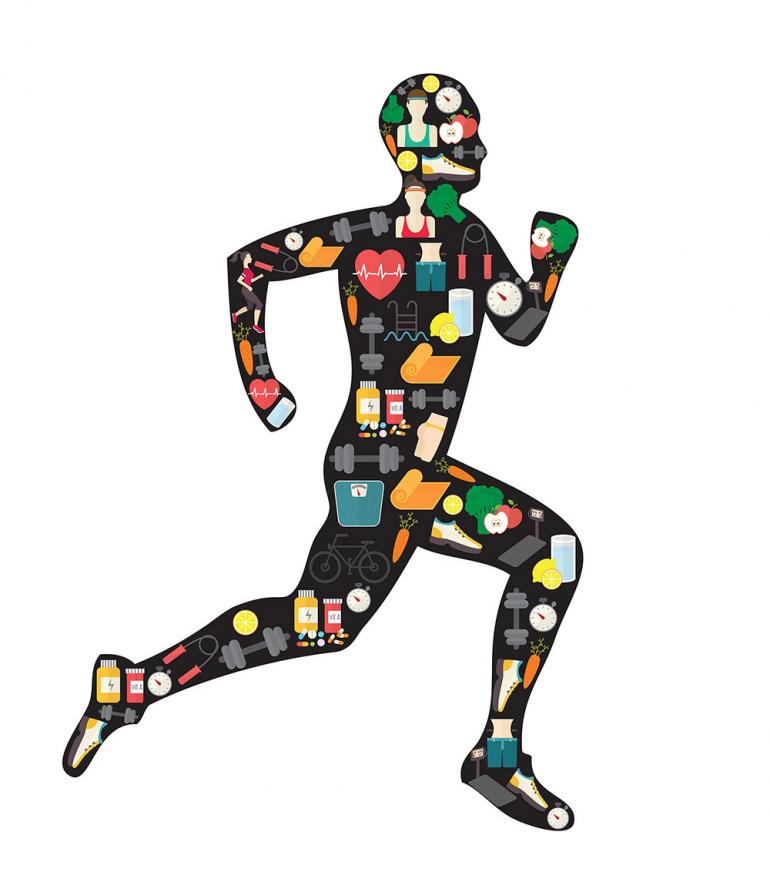Conscious Carbs
Intentional nutrition for race season.
It’s summertime; off-season is in the rearview and you’re knee-deep in training. That also means increased, or modified, fueling needs. “Periodized nutrition” refers to the strategic, combined use of exercise training and nutrition to obtain physiological adaptations that support exercise performance. The term “nutritional training” is also sometimes used to describe the same methods.
Ensuring that your food intake meets your training demands is key to a successful season. If you are under-consuming fuel, you are at risk of injury, illness, and loss of lean body mass. If you are over-consuming fuel, you may be packing on the pounds before your first race even rolls around. The goal is to be right on the money—consuming just what you need to fuel those hard training efforts and feel your most powerful. Here are some nutritional considerations to implement for this race season:
Eat Intuitively & Thoughtfully
Pay attention to your hunger cues and what you are craving. Because eating can be so interwoven with our emotions, sometimes we eat because we are tired, bored, or anxious instead of truly hungry. If you are heading to the pantry multiple times after dinner, think about why this is happening—are you still hungry? Or are you just in close proximity to food and feel the need to eat while in front of the TV? Try to tune out the outside world when you eat—put your phone down, turn the TV off, and just focus on the food. Avoid shoving food in just because you feel like you need it; ask yourself if you are actually hungry.
Make Your Own Plan
There is no “right” way to structure daily meals and snacks. I have some clients who prefer five to six smaller meals; others prefer three larger meals. It really comes down to what works best with your schedule, and what makes your gut happiest. I also recommend consuming calories often enough that you avoid the hangry moments when you can eat the whole house down. Don’t let yourself get to that point by having balanced snacks ready to go in your car, workout bag, or briefcase.
Track Food Intake
Websites like My Fitness Pal or My Plate are helpful in shedding light on what you are consuming throughout the day. Awareness is key. It’s possible that you are under or over-consuming calories (or another nutrient), and don’t even realize it. Tracking is a helpful tool in moderating intake. You don’t have to do it forever, but it does provide a baseline.
Tune into Your Body
Are you losing weight? Gaining weight? How are your clothes fitting? Do you feel powerful on your bike, and speedy on a run? I don’t believe in an “ideal body weight” for an individual. Instead, I feel that the weight & body composition in which you feel lean but still powerful is your money spot. And this is different for everyone. Don’t hold yourself to someone else’s standards.
Macronutrient Breakdown
As a season or training program progresses, your caloric needs do fluctuate, but it may be subtler than you think. Ideal macronutrient percentages vary depending on training load, individual differences in metabolism, and food preferences. In the off-season, you can get away with a higher fat and lower carbohydrate intake, while training season may require more carbohydrates either from fruit & vegetable or grain sources. Protein needs also change during training season. You’re breaking down and utilizing more muscle mass, which requires increased amino-acid consumption to rebuild protein stores. Finding the right formula requires some trial and error. Reach out to a sports dietitian if you need personalized help.
Brooke Schohl is a registered sports dietitian and the founder of Grit Sports Nutrition in Bozeman. Her website is gritsportsnutrition.com.













